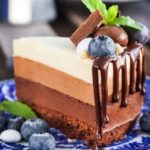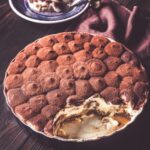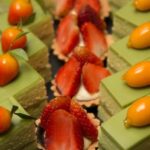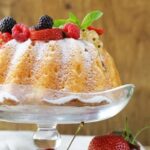Are you looking to create a show-stopping three-tier cake for your next special occasion? Whether it’s a wedding, anniversary, or milestone birthday, mastering the art of decorating a three-tier cake can be a rewarding and impressive feat.
In this article, we will guide you through the process of creating a stunning three-tier cake that will leave your guests in awe. From leveling and stacking layers to choosing the perfect frosting and decoration techniques, we’ve got you covered.
When it comes to creating a three-tier cake, attention to detail is key. The significance of a three-tier cake goes beyond its physical appearance; it symbolizes grandeur and celebration. Therefore, it’s essential to ensure that every aspect of the cake is carefully considered and executed. With the right tools and techniques, you can achieve professional-looking results that will exceed even your highest expectations.
In this comprehensive guide, we will walk you through the necessary tools and ingredients for decorating a three-tier cake. We’ll also provide you with step-by-step instructions on leveling, filling, and stacking the cake layers to ensure stability and precision.
Additionally, we’ll explore different frosting options and fondant techniques to help you achieve a flawless finish. Whether you’re an experienced baker or new to the world of cake decorating, this article is designed to equip you with the knowledge and skills needed to create an unforgettable three-tier masterpiece.
Necessary Tools and Ingredients for Decorating a Three-Tier Cake
When it comes to decorating a three-tier cake, having the right tools and ingredients is essential for a successful outcome. Some necessary tools include a rotating cake stand, offset spatulas in different sizes, piping bags and tips, a bench scraper, and a cake leveler. These tools will help you achieve smooth and even frosting, precise piping, and clean edges on each tier of the cake.
In addition to tools, it’s important to have the right ingredients for decorating a three-tier cake. This includes a sturdy cake recipe that can support the weight of multiple layers, as well as various flavors of frosting and fondant if you plan to use them.
For decorative elements, edible flowers, fresh fruits, and other garnishes are great options to enhance the overall look of the cake. It’s also important to have food coloring gels or powders on hand if you want to create custom-colored frostings or decorations.
Lastly, having a good quality turntable or lazy Susan can make the process of decorating a three-tier cake much easier. This allows for smooth rotations while applying frosting or fondant to each tier. A large offset spatula is also crucial for smoothing and shaping frosting on the sides of each tier. By having these necessary tools and ingredients at your disposal, you’ll be better equipped to decorate a stunning three-tier cake for any special occasion.
Step-by-Step Guide to Leveling, Filling, and Stacking the Cake Layers
Leveling, filling, and stacking the cake layers are essential steps in creating a three-tier cake that is not only visually stunning but also moist and delicious. To start, you will need the necessary tools such as a long serrated knife, cake leveler, offset spatula, and cake board. It is also important to have the right ingredients including your choice of cake batter, filling, and syrups for added moisture.
The first step is to ensure that each cake layer is flat and even. Using a long serrated knife or a cake leveler, carefully trim off any domed tops to create a level surface. Next, spread a thin layer of frosting or filling on top of one cake layer using an offset spatula. This will add moisture and flavor to the cake while also acting as an adhesive when stacking the layers.
Once the first layer is filled, carefully stack the second layer on top, ensuring that it is aligned properly. Repeat the process until all layers are stacked on top of each other. Use a clean ruler or measuring tape to ensure that each tier is evenly stacked for a professional looking result.
Finally, place a dowel through the center of all tiers to secure them in place before moving on to decorating with frosting or fondant. Following these step-by-step guidelines will help you achieve perfect leveled, filled, and stacked layers for your three-tier cake masterpiece.
Choosing the Right Frosting and Fondant for a Three-Tier Cake
When it comes to decorating a three-tier cake, choosing the right frosting and fondant is crucial in achieving the desired look and taste of the final product. Here are some important aspects to consider when selecting the frosting and fondant for your cake:
- Type of Frosting: There are various types of frosting that can be used for a three-tier cake, including buttercream, cream cheese, whipped cream, and ganache. Each type has its own unique flavor and consistency, so it’s important to choose one that complements the flavors of your cake layers.
- Fondant Options: Fondant is a popular choice for covering and decorating three-tier cakes due to its smooth and polished finish. Rolled fondant is the most commonly used type, but there are also options like marshmallow fondant or modeling chocolate for added flavor and flexibility.
- Color and Texture: Consider the color scheme and texture you want to achieve with your cake decorations. Some frostings can hold bright colors better than others, while fondants can be easily tinted to match any desired shade.
Once you have considered these factors, you can then move on to applying the frosting and fondant onto your three-tier cake. It’s important to work carefully and patiently when covering each layer to ensure a seamless and professional finish.
Remember that practicing with different types of frostings and fondants can help you determine which ones work best for your specific design ideas and flavor preferences. Ultimately, choosing the right frosting and fondant will greatly contribute to the overall success of your beautifully decorated three-tier cake.
Techniques for Creating Beautiful and Professional-Looking Decorations
When it comes to decorating a three-tier cake, the techniques used can make all the difference in creating a beautiful and professional-looking finished product. Whether you’re working with buttercream, fondant, or royal icing, there are several key techniques that can take your cake decorating to the next level.
Piping Techniques
One popular technique for creating beautiful decorations on a three-tier cake is piping. This involves using a piping bag and various tips to pipe out designs such as flowers, borders, and intricate patterns. With practice and patience, piping can add an elegant touch to any cake.
Fondant Sculpting
For those working with fondant, sculpting is another technique that can create stunning decorations. From intricate figurines to delicate flowers, fondant sculpting allows for endless creativity in designing the perfect adornments for your three-tier cake.
Stencil Work
Stencil work is a technique that can add intricate designs and details to a cake with ease. By placing a stencil over the frosted surface of the cake and then applying powdered sugar or edible spray paint, you can achieve beautiful patterns and designs without needing advanced artistic skills.
By mastering these techniques and incorporating them into your three-tier cake decorating process, you can elevate your cakes from simple desserts to stunning works of art that are sure to impress any crowd.
Tips for Adding Edible Flowers, Fresh Fruits, and Other Garnishes
Adding edible flowers, fresh fruits, and other garnishes to a three-tier cake can take its appearance and taste to the next level. Whether you are looking to add a pop of color, a touch of freshness, or a burst of flavor, there are many options for decorating your cake with these natural elements. When considering what garnishes to add to your cake, it’s important to keep in mind the overall theme and flavor profile of the cake.
One popular option for adding a touch of elegance and color to a three-tier cake is using edible flowers as decorations. Not only do they add visual appeal, but they also provide a unique and delicate flavor that can complement the cake’s taste. Some popular edible flower options include roses, pansies, violets, and lavender. It’s important to ensure that the flowers you choose are pesticide-free and safe for consumption.
Fresh fruits are another great way to enhance the appearance and flavor of a three-tier cake. Whether you opt for berries, citrus slices, or tropical fruits, they can bring a refreshing and vibrant element to your cake. Consider using fruits that are in season for the best quality and flavor. Additionally, fruit garnishes can be arranged in creative patterns or cascading designs on the tiers of the cake.
Finally, other garnishes such as chocolate curls, candy pearls, or edible glitter can add texture and whimsy to your three-tier cake. These additions can be used sparingly to add visual interest without overpowering the overall design of the cake. Experiment with different types of garnishes to find what works best with your specific cake design and flavor profile.
| Garnish Type | Best Pairings |
|---|---|
| Edible Flowers | Vanilla cakes with light flavors |
| Fresh Fruits | Chocolate cakes or citrus-flavored cakes |
| Candy Pearls/Edible Glitter | Any type of cake needing extra sparkle |
Troubleshooting Common Decorating Challenges
Cracks and Bulges
One of the most common challenges when decorating a three-tier cake is dealing with cracks in the fondant or bulges between the layers. To prevent cracks, ensure that your fondant is rolled out to the correct thickness and that it is not too dry or too sticky. Cracks can also be minimized by gently smoothing out the fondant after it has been applied to the cake.
As for bulges, these can occur when too much filling is used between layers or if the cake layers are not leveled properly. To avoid bulges, use a minimal amount of filling and make sure to level each layer carefully.
Uneven Frosting
Achieving smooth and even frosting on a three-tier cake can be challenging, especially for beginners. One tip to address this issue is to apply a thin layer of frosting called a crumb coat before adding the final layer of frosting.
This crumb coat will help seal in any loose crumbs and create an even surface for the final layer of frosting. Another technique to achieve smooth frosting is to use a bench scraper or offset spatula to consistently spread a thin layer of frosting around the cake.
Fondant Rips and Tears
Working with fondant can be tricky, and one common problem is rips and tears in the fondant while applying it to the cake. To prevent this issue, ensure that your fondant has been rolled out to an appropriate thickness and consider using powdered sugar or cornstarch to prevent sticking.
If you do encounter a rip or tear, gently press the fondant back together with your fingers, using a small amount of water as adhesive if needed. In some cases, decorative elements such as flowers or ribbons can be strategically placed over any remaining visible tears.
Final Touches
In conclusion, decorating a three-tier cake can be a rewarding and impressive feat for any baker. It requires attention to detail, patience, and creativity to ensure that the final product looks professional and visually stunning. Once the cake is fully decorated, it’s important to give consideration to the final touches: presentation, transporting, and storing the finished cake.
When presenting a three-tier cake, it’s essential to choose an appropriate display stand or platter that not only complements the design of the cake but also provides stability and support. Additionally, considering the event or occasion where the cake will be served is crucial in determining the overall aesthetic of the presentation. Whether it’s a formal wedding reception or a casual birthday party, the presentation should be fitting to the theme and atmosphere.
Transporting a three-tier cake can be quite challenging due to its size and delicate decorations. It’s recommended to assemble the tiers at the venue if possible, especially for elaborate designs. If transport is necessary, using support dowels and careful handling are essential for keeping the tiers in place during transit.
Finally, storing the finished cake properly is crucial to maintaining its freshness and appearance. Refrigeration may be required depending on the type of frosting used, but ensuring that it’s shielded from air and moisture will help preserve its quality until serving time.
Frequently Asked Questions
How Do You Stack a 3 Layer Cake?
Stacking a 3-layer cake involves carefully layering each cake on top of the other, ensuring that they are evenly aligned and centered. It’s important to spread a layer of icing or filling between each cake layer to help them adhere to each other.
Using a long, serrated knife and a cake lifter can also be helpful in ensuring that the cakes are stacked neatly and securely.
How Many People Can You Put in a 3 Tier Cake?
The number of people you can serve with a 3-tier cake largely depends on the size of the tiers and how generously you cut the slices. Typically, a 3-tier cake could comfortably serve anywhere from 50 to 100 people, depending on whether it’s being served as the main dessert or as part of a larger spread.
What Do You Put Between Cake Tiers?
To ensure that cake tiers hold together and don’t slide off one another, it’s important to use supports between layers. This can be done by inserting dowels or straws into the bottom layers before stacking additional tiers on top.
Additionally, spreading a thin layer of buttercream or frosting between each tier will help secure them in place while adding flavor and moisture to the overall presentation.

Welcome to my blog about home and family. This blog is a place where I will share my thoughts, ideas, and experiences related to these important topics. I am a stay-at-home mom with two young children. I hope you enjoy reading it! and may find some helpful tips and ideas that will make your home and family life even better!





